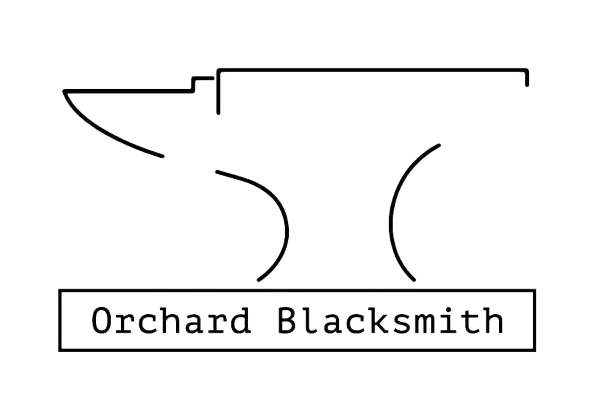Understanding Hammer Techniques: Forging Blows vs. Planishing
Blacksmithing isn’t just about hitting hot steel — it’s about how you hit it. Every hammer strike has a purpose, and knowing the difference between forging blows and planishing blows is essential for taking your work from rough shaping to smooth, professional finishes.
In this post, we’ll break down the difference between the two, when to use each, and how they fit together in the forging process.
Forging Blows: Moving Metal
Forging blows are the heavy strikes that move hot steel where you want it to go. They’re about shaping and stretching metal, not worrying about how it looks just yet.
Characteristics of Forging Blows:
Delivered with strength and depth.
Leave hammer marks, dents, or ridges in the work.
Move metal quickly — drawing it out, upsetting, or bending.
Require the steel to be at higher forging temperatures (bright orange to yellow).
When to Use Forging Blows:
Drawing out bar stock into longer tapers.
Upsetting the end of a piece to make it thicker.
Starting scrolls or curves.
General shaping when the metal needs to move a lot.
Think of forging blows as the “rough draft” stage of your work: get the steel into the right size and shape first, then worry about refinement later.
Planishing Blows: Refining the Surface
Planishing blows are the lighter, controlled strikes used to smooth, refine, and straighten the steel after shaping. They don’t move the metal much — instead, they correct and even out the surface.
Characteristics of Planishing Blows:
Delivered with less force, more finesse.
Flatten hammer marks and blend surfaces together.
Straighten curves, edges, and flat planes.
Work best at lower heats (dull orange to red) when the metal is more rigid.
When to Use Planishing Blows:
After forging blows, to clean up the surface.
Straightening thin stock that tends to warp.
Refining blades, leaves, or decorative work.
Prepping a piece before filing, grinding, or finishing.
Planishing is like the editing stage of your work — smoothing, correcting, and refining until it looks right.
How They Work Together
Start with forging blows to get your steel into the right shape and size.
Transition to planishing blows once the rough shaping is done.
Use planishing throughout to correct distortions before they get worse.
End every project with a round of planishing to tighten up the look and make further finishing (filing, grinding, sanding) easier.
Tips for Success
Hammer Choice Matters: A flat-faced hammer works better for planishing, while cross-peen or rounding hammers excel at forging.
Heat Control: Forging blows need hotter steel; planishing works best on cooler metal to lock the shape in.
Don’t Overdo It: Too many heavy forging blows on thin stock will distort it; too much planishing at high heat can wash out details.
Practice Rhythm: Planishing is about controlled rhythm, not brute force. Think “tap-tap-tap” instead of “bang-bang-bang.”
Final Thoughts
Forging and planishing aren’t opposites — they’re partners. Forging blows give you power and movement; planishing blows give you control and refinement. Mastering both is what separates rough work from polished, professional ironwork.
If you are interested in discussing a potential project, please do not hesitate to contact us.
